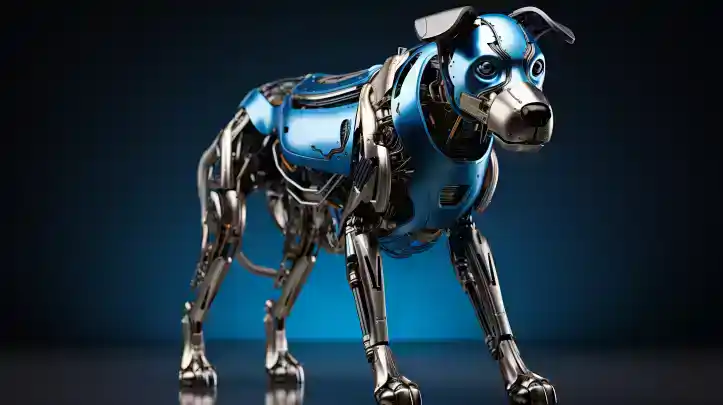Table of Contents
Jihee Kim has introduced Laika, a concept design that combines space travel and robotics. Laika is an AI robot pet that is specifically designed to interact with humans. It has been created for upcoming space projects like NASA’s Artemis and Moon to Mars missions, which are scheduled for 2025-2030. Laika is envisioned as the perfect companion for space explorers, providing both physical and emotional support while they are away from home.
Unlike the aggressive robotic dogs currently available, it has a friendly and organic finish that allows it to connect with its human counterpart on an emotional level. It also monitors the health conditions of the users and assists them in emergencies. This design is not limited to space missions and can easily integrate into domestic contexts as well.

Laika’s Form and Practicality
Laika, constructed using sturdy titanium, is specifically designed to endure the extreme conditions of outer space. Its advanced structure incorporates various sensors such as thermal imaging cameras, depth cameras, ultrasonic sensors, and slam cameras, which enable Laika to detect and analyze its surroundings with great precision. Moreover, the inclusion of ECG sensors in its neck area allows Laika to monitor astronauts’ health and assist in emergencies.
Forging Human-AI Bonds
The significance of Laika lies not only in its technological prowess but also in its ability to forge emotional connections. It exemplifies the synergy between human emotions and AI capabilities, emphasizing the importance of companionship in the cosmic unknown.
Engaging Interactive Partner
Laika surpasses being a simple instrument by providing dynamic movements and interactions via mixed reality glasses. Astronauts have the ability to receive live updates on their actions, cultivating a nurturing digital connection. Its natural canine appearance aims to establish an emotional bond with humans, bridging the emotional void experienced by astronauts in space.
Functional and Flexible
It is equipped with a flexible handle on its back, enhancing its functionality. This feature enables astronauts to conveniently transport small objects during physical activity or reposition the robot as required. Despite being primarily designed for space missions, its appealing design enables it to effortlessly blend into everyday settings, showcasing its versatility. The project, supervised by tutor Tate Eunyoung Kim at Hongik University, has been submitted for publication through Designboom’s DIY submissions feature.
In the foreseeable future, the designer foresees the incorporation of mixed reality glasses as a customary accessory. Through these wearables, users will be able to engage with Laika and obtain up-to-date information and updates on their pet’s actions. Additionally, the flexible handle on the robot dog’s back serves a practical purpose, enabling users to conveniently carry a small bottle while exercising or transport the dog to different locations.
As Laika continues its journey alongside space explorers, its presence signifies more than technological advancement and it symbolizes the human need for companionship and emotional resonance, even amidst the vastness of space. It stands as a testament to the harmonious alliance between human emotion and AI capabilities, nurturing astronauts’ spirits in their pursuit of the cosmos.
Laika represents more than just an AI innovation; it embodies a paradigm shift in space exploration. As astronauts embark on their missions, this lifelike AI companion serves as a testament to the merging of technology and emotional support, marking a significant leap in humanity’s cosmic endeavors.
You may also like: Meta Dissolves AI Team: A Shift in Focus Sparks Debate, Who is Mira Murati, OpenAI’s new interim CEO?, Discord AI Chatbot Clyde to Be Discontinued Soon after 2 years of its Launch, Microsoft’s Game-Changing AI Tools: Collaboration with Inworld AI